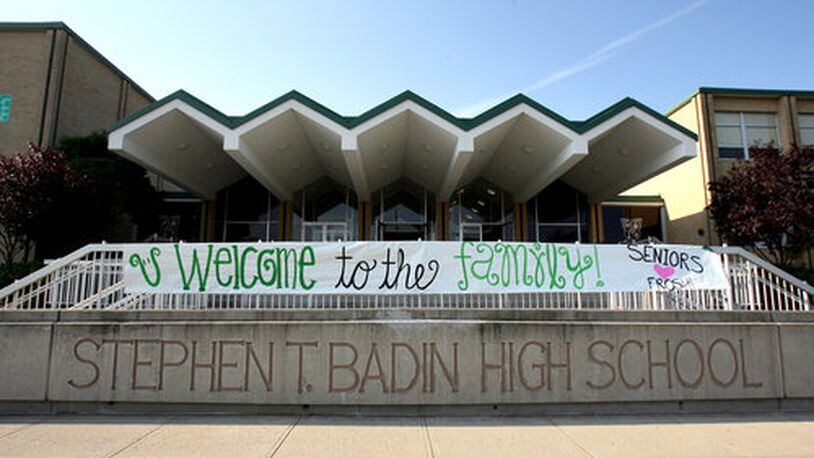Badin High School Strategic Plan
Vision: Badin High School will be the model for all Catholic high schools as we profoundly shape the way students think, achieve, serve and lead.
Mission: In an enriching and innovative college preparatory environment, rooted in Catholic tradition, Stephen T. Badin High School inspires young men and women to achieve their personal best, live their faith and lead the future.
Priority 1: Academics, Facilities and Student Satisfaction
Priority 2: Marketing and Brand Identity and Asset Development to Support Strategic Goals
Priority 3: Spiritual Life, Faculty/Staff and Communication
Source: Badin High School
Academics and facility improvements are the core of a new five-year strategic plan at Badin High School.
The Catholic institution has established its first vision statement and five-year strategic plan in hopes of becoming the model for all Catholic high schools, according to Kelli Kurtz, executive director of institutional advancement.
“There are challenges in education as a whole, but in Catholic education in particular, it’s very competitive in southwest Ohio,” Kurtz said. “With Ohio changing standards, we want to be on the forefront and not lagging behind.”
Since 2000, the Archdiocese of Cincinnati — the country’s seventh largest network of Catholic schools with 42,800 students — has been recording annual decreases in enrollment. In the past 13 years, enrollment has declined more than 15 percent in private high schools, according to Archdiocese of Cincinnati.
Badin is forecasting about 540 students for the 2013-14 school year, according to Dirk Allen, director of admissions. The school’s long-term goal is enrollment of 600 students or more.
Kurtz said for decades, Catholic high schools relied on steady enrollment from feeder schools. But it changed about 12 years ago when the Archdiocese of Cincinnati allowed open enrollment for families and took away boundary lines.
“We all had to take a look at what we offer and how we differentiate ourselves,” Kurtz said.
Seventeen percent of Badin’s freshman class this year came from public schools, according to Allen.
Kurtz said the school’s strategic planning process began in August 2011, with the board defining areas of focus, such as academics, faculty and staff and alumni relations.
Over the next five years, Badin will work to build on the existing honor and Advanced Placement course offerings, said Kathleen Klink, chair of academics task force and retired Lakota Schools superintendent.
“We want to explore ways to expand curriculum and offering college credits while in high school,” Klink said. “College is so expensive and if we can open doors while they are in high school, it’s phenomenal.”
To do that, Kurtz said the school will enhance partnerships with local colleges, universities and corporate leaders.
Etta Reed, chair of the facilities task force, said each and every priority of the vision plan is important to the success of the students and the 47-year-old school building.
Under the facilities priority, the Badin community will focus in the next five years on creating a campus of the future by upgrading existing facilities to be more energy efficient; making technology improvements; and building an athletic stadium for sports currently without a home field, including football and track and field.
“If you have updated infrastructure to the building, you will have a better environment for children to learn in,” Reed said. “This will only be for the better; technology advances will better prepare students for their future.”
Kurtz said infrastructure improvements will include a new boiler and windows — all off which are original to the building. In the past two years, Badin added air conditioning to all classrooms, Reed said.
Kurtz said a big goal of the strategic plan is to not just focus on the college and career readiness of students, but also personal and professional achievement.
“You’re not just defined by your career and money but how you balance life,” Kurtz said. “We want to create critical thinkers that look for opportunities to live out gospel values personally and professionally.”
Kurtz said as the demographics at Badin have changed — from 90 percent Catholic to less than 85 percent — the school will be making a concerted effort to implement a program for non-Catholic students and families.
“We want to support all students in their faith life no matter the denomination,” Kurtz said.
Kurtz said the next step in the strategic plan process is for the individual task forces to prioritize their action plans and pinpoint dollar figures for the projects. She said the plan is very timely, as Badin celebrates 50 years in 2016.
About the Author
